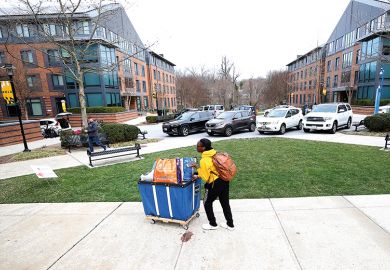Teaching students online produces the same academic performance as face-to-face teaching, according to a new study published in the midst of a global shift to remote learning.
In a paper published in Science Advances, researchers compared the academic outcomes and satisfaction of students who were either taught fully online, through blended learning – in which students are taught through a combination of online and in-person – or taught fully in-person on two STEM courses at three higher education institutions in Russia.
The results, which come at a time when universities across the world have had to shut their campuses and move to online instruction as a result of the coronavirus pandemic, found that students who were taught wholly online scored the highest on their average scores in assessments taken throughout the course.
Those taught fully online scored, on average, 7.2 percentage points higher than the other two forms of learning.
The STEM courses were available through OpenEdu, a Russian non-profit organisation founded by eight universities to provide university courses online, while the course content, such as topics, required reading and assessment, was identical for all students.
The authors looked at three separate student outcomes: their average assessment score, their final exam grade and the results of a student satisfaction questionnaire.
Overall, the results showed that the final exam results of 325 students in the study were fairly similar across the three teaching types.
However, the fully online students reported lower levels of satisfaction from their courses, while students taught via the blended and in-person methods reported similar, higher levels of satisfaction.
“This is the strongest evidence to date that an average college student can learn just as much from a course online as on campus or with blended learning,” according to Rene Kizilcec, assistant professor of information science at Cornell University and a co-author on the study.
“The fact that students find online learning less satisfying doesn’t mean it is less effective. That’s why we shouldn’t rely too much on student surveys such as teaching evaluations to judge the quality of instruction, especially in a time of crisis when the transition to online learning is unplanned.”
He added that the study only used basic online course materials to match the in-person content, “but prior research shows that interactive and social online activities with immediate feedback could have produced even larger learning gains”.
According to the paper, teaching online or via blended learning also offers significant cost savings: blended teaching lowered the cost per student by 15 to 19 per cent, depending on the course, and online instruction lowered the per-student cost by 79 to 81 per cent, depending on the course.
According to the report’s authors, national platforms can play an important role in scaling the provision of quality online teaching.
This is particularly important for STEM courses, which are traditionally much more expensive to teach, and for universities that are facing depleted funding because of the crisis, according to Igor Chirikov, senior researcher at the University of Berkeley’s Center for Studies in Higher Education and the paper’s lead author.
“Online education platforms have a big potential to expand access to quality STEM education worldwide,” he said. “Such platforms could bring cost savings to financially distressed colleges and offer flexible learning opportunities to students without diminishing learning outcomes.”
Register to continue
Why register?
- Registration is free and only takes a moment
- Once registered, you can read 3 articles a month
- Sign up for our newsletter
Subscribe
Or subscribe for unlimited access to:
- Unlimited access to news, views, insights & reviews
- Digital editions
- Digital access to THE’s university and college rankings analysis
Already registered or a current subscriber? Login








